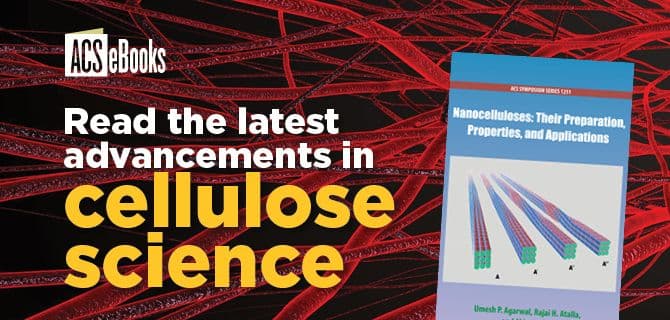Nanocellulose is a trending topic for many research laboratories because of its commercial value and range of applications. Researchers are seeking novel ways of using different types of nanocelluloses to produce commercially viable products. Because nanocelluloses are produced from the most abundant naturally occurring homo-polymer, there seem to be limitless opportunities for sourcing and applications. The […]

Nanocellulose is a trending topic for many research laboratories because of its commercial value and range of applications. Researchers are seeking novel ways of using different types of nanocelluloses to produce commercially viable products.
Because nanocelluloses are produced from the most abundant naturally occurring homo-polymer, there seem to be limitless opportunities for sourcing and applications. The challenge, however, is that the native celluloses from different plant sources are distinct, so different protocols are appropriate for nanocelluloses from different sources.
Read the first chapter of The Nanostructures of Native Celluloses, Their Transformations upon Isolation, and Their Implications for Production of Nanocelluloses for free .
Who will find this book useful?
The book is engaging for a variety of research staff, especially those who are currently active in research on the production of unique nanocelluloses from different plant sources. Scientists who are interested in the basic phenomenology of cellulose, as well as in chemical derivatization of nanocelluloses, would be benefited from the book as well. This book is a valuable tool for those interested in nanophenomena particularly in the context of biomass.
Where can the discussions in the book be best applied?
There are a few areas of application discussed in the book, including the production of composites wherein the inclusion of nanocelluloses can provide significant reinforcement; and the inclusion of nanofibrils of cellulose in various fluid media, which results in unique modifications of the properties of the fluids.
About the Book’s Editors
Umesh P. Agarwal
Umesh P. Agarwal is a Fellow of the International Academy of Wood Science and is currently employed as a senior scientist at the Forest Products Laboratory, USDA Forest Service, Madison WI. In 1979, he received his Ph.D. in Chemistry from the Indian Institute of Technology (Kanpur, India). Subsequently, as a postdoctoral fellow, he carried out research at various institutions in England, Germany, and the United States. His current research activities are in the areas of cellulose nanomaterials, supramolecular structure and crystallinity of cellulose, ultrastructure of wood cell walls, and development of Raman spectroscopy to investigate cellulose and lignocellulose materials. He has published ~ 100 papers in peer-reviewed journals, written several book chapters, and made significant contributions at national and international conferences/meetings.
Rajai H. Atalla
Rajai H. Atalla received a Ph.D. from the University of Delaware in Chemical Engineering and Chemical Physics. He has served as Professor of Engineering and Chemical Physics at the Institute of Paper Chemistry in Appleton, Wisconsin. In 1989, he became Head of Chemistry and Pulping Research at the Forest Products Laboratory (FPL) in Madison, Wisconsin and Adjunct Professor of Chemical Engineering at the University of Wisconsin. He pioneered the application of Raman spectroscopy and SS 13C NMR to an investigation of celluloses leading to the discovery of the Iα and Iβ forms of native celluloses. He has served as a consultant to many companies and government agencies in the forest products and cellulosic sectors. He has well more than 250 peer-reviewed publications, book chapters, and patents. He has also had the good fortune of having the two co-editors as collaborators for many decades.
Akira Isogai
Akira Isogai graduated from The University of Tokyo in 1980 and received his Ph.D. from its Graduate School of Agriculture in 1985. After a year as a Postdoctoral fellow the Institute of Paper Chemistry, he was appointed Assistant Professor at The University of Tokyo. In 2003 he became Professor in the Department of Biomaterial Sciences at The University of Tokyo. He pioneered the study of nanocelluloses and their TEMPO oxidation beginning in 1995 and is the leading contributor in the field, which is reflected in more than 500 publications and 130 patents. He is president of The Cellulose Society of Japan, a vice president of Japan Nanocellulose Forum, a board member of Japan TAPPI and other academic societies, an Associate Editor of Cellulose (Springer), and a member of the Advisory Editorial Board of Biomacromolecules (ACS) and other scientific journals.